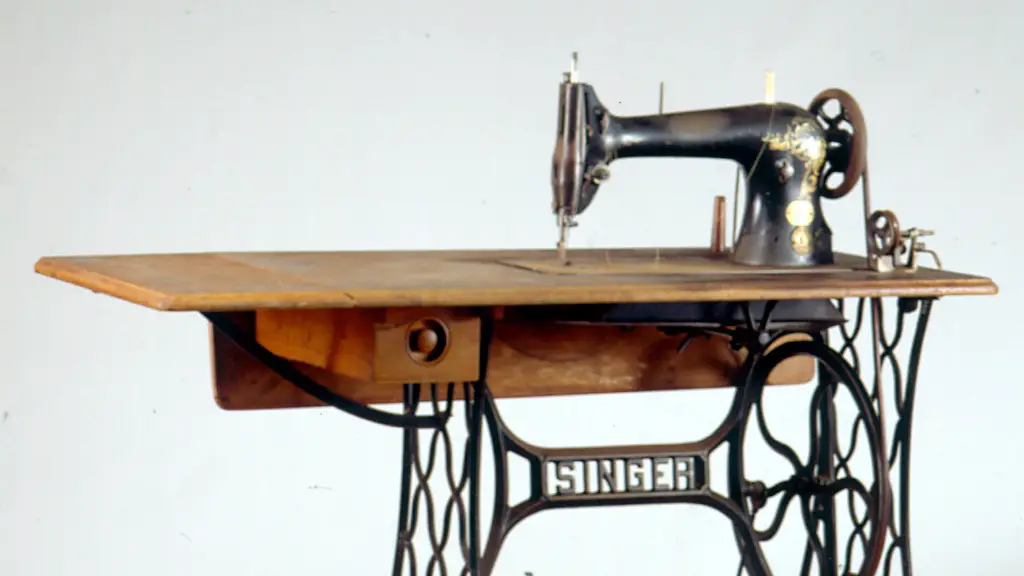Overview
Sewing needles are one of the essential tools to any crafter or seamstress. It is important to understand what type of needle is best suited for a project, especially if the goal is to create a finished product that is of high quality. Different materials, fabrics, and sewing techniques require different types of needles. Choosing the wrong type of needle can result in major problems. It is important to select the correct needle for the task at hand to ensure the best results. This article will provide an overview of the various types of sewing needles available and explain which type of needle is best for different projects.
Sharp vs Ball Point
The two main categories of sewing needles are sharp and ball point. The basic difference between them is the nature of the tip. A sharp needle has a sharp pointed end that is designed to penetrate through the material, and easily maneuver around threads. Ball point needles have a rounded, more blunt tip and are used for fabrics that may snag or unravel easily. Examples of these fabrics are knits and stretchy materials. The dull tip will push the fibers of the fabric instead of piercing them.
Types of Needles
Within the two main categories of needles, there are further varieties. A sharps needle generally comes in a variety of sizes, with a smaller number being used for lighter fabrics and thicker numbers being used for heavier fabrics. Most individuals who sew will own a variety of sharps needles in different sizes. The sizes of sharps needles range from 8 to 18, with 18 being the strongest.
The variety of ball point needles are similarly identified by either a range of sizes or by a number that corresponds with the specific material it is designed for. The sizes of ball point needles range from 9 to 16, with the 9 needle being the strongest. Ball point needles are usually labeled with either the type of fabric they are meant to pierce, such as denim or leather, or with numbers that correspond with the strength of the material they are meant to pierce.
Universal Needles
Universal needles are named as such because they are a combination of both sharp and ball point needles. They have the same dull tip as a ball point needle, but slightly sharper edges for piercing through thicker fabric. Universal needles are a good choice for fabrics that may not require a needle too fine or too dull, like materials such as canvas, denim, and corduroy. Universal needles also come in a variety of sizes and strengths, with sizes ranging from 8 to 18.
Leather Needles
Leather needles are specialty needles designed to pierce through tougher materials like leather and plastic. These needles have an extra strong point that is designed to penetrate through tough materials. Leather needles come in sizes ranging from 8 to 12. The smaller the size, the sharper the needle.
Quilting Needles
Quilting needles are specialty needles that are specifically designed to work with quilting projects. These needles have a very sharp point and a larger eye, which is designed to easily maneuver through layers of fabric and batting. The sizes of quilting needles range from 8 to 14, with a 14 being the largest.
Embroidery Needles
Embroidery needles are specialty needles designed for embroidery projects. These needles have a longer eye than regular sewing needles and are usually sold in a variety of sizes and strengths. The types of embroidery needles available range from sharp to ball point, with sizes ranging from 7 to 12.
Twin Needles
Twin needles are specialty needles designed for projects where two lines of stitching need to be created at the same time. These needles come with two points and two eyes, allowing them to easily create even stitches on both sides of the fabric. Twin needles are usually sold in sizes ranging from 2.5 to 6.0, with the larger number being the stronger of the two.
Straw Needles
Straw needles are extremely specialized needles that are used to stitch long straw pieces together. These needles are made with very strong points that can penetrate through tough materials. Straw needles come in sizes ranging from 8 to 12.
Summary
Choosing the right sewing needle can make or break a project. It is important to understand the differences between the various types of needles and select the one best suited for the fabric and technique being used. A sharp needle is best for most fabrics and materials, while a ball point needle is better for fabrics that may snag or unravel easily. Specialty needles, such as leather needles, quilting needles, embroidery needles, twin needles, and straw needles can be used for specific projects. It is important to select the correct size and strength for the needle being used for the best results possible.

